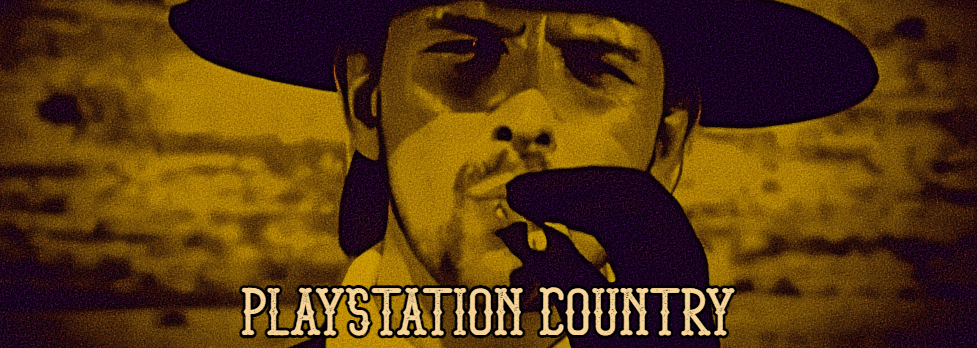Back when browser games were king, QWOP tested your ability to operate a runner by triggering the muscles of their legs. It was hell and, unfortunately, someone gave Bennet Foddy, Gabe Cuzzillo and Maxi Boch more money to realise this horrifying ambition on a larger scale. Baby Steps is slightly more arcade-like in approach but the execution is shockingly well-realised. Whilst it may look like a quick rage-bait game on the surface, there’s more to discover.
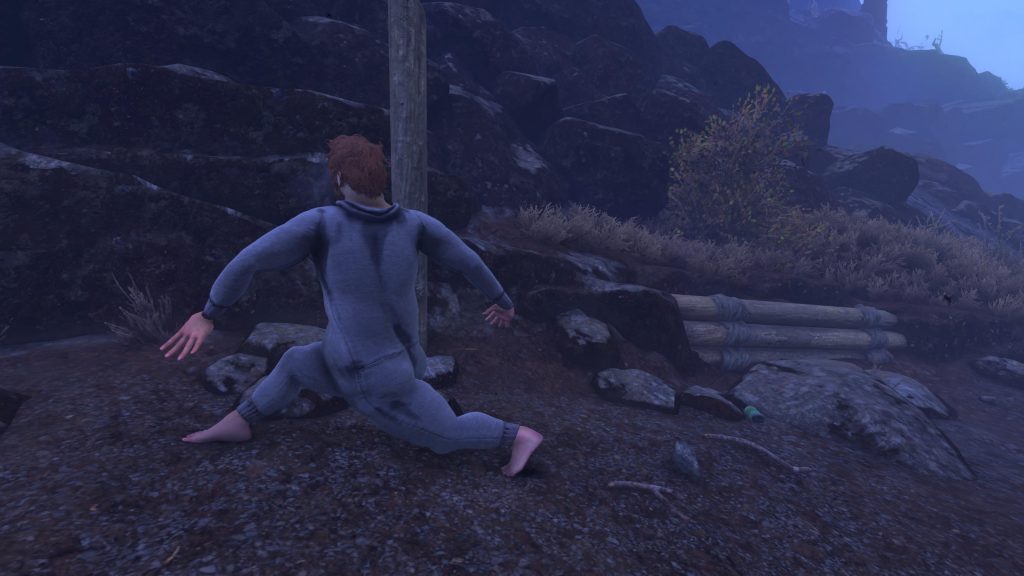 Nate is a 35 year-old sloth with no job, friends or prospects. The story begins with his parents about to call an intervention for the bedroom dweller. Due to some unforeseen circumstances, he’s popped away into a mountainous wilderness of naked donkey folk and helpful Australians. As a character, Nate sucks. He refuses help from well-wishers, is socially inept and genuinely makes life difficult for himself. He should be repellent but the writing does soften him over time.
Nate is a 35 year-old sloth with no job, friends or prospects. The story begins with his parents about to call an intervention for the bedroom dweller. Due to some unforeseen circumstances, he’s popped away into a mountainous wilderness of naked donkey folk and helpful Australians. As a character, Nate sucks. He refuses help from well-wishers, is socially inept and genuinely makes life difficult for himself. He should be repellent but the writing does soften him over time.
Playing through it, I did wonder if a lesson was going to be learned or a corner turned on Nate’s outlook. It’s clear Baby Steps has some thoughts about players, what it’s like to feel like a failure and game design. They get their shots in without preaching too hard and that measured touch does make for a provocative experience.
The dialogue is funny, although the improvised nature of it won’t land for everyone. I enjoyed it and was genuinely intrigued to see what the small cast of characters would do next. Nate can be quite a destructive force of nature and, depending on where you wander, that can manifest in some unintentionally dark ways. I think some of the tale is up to interpretation, right down to the bedroom depictions between chapters.
The act of walking in Baby Steps is surprisingly easy to grasp. The triggers control their respective legs whilst the left analogue stick is used to maintain balance. The right analogue stick controls the camera which can influence Nate’s dexterity. Nate will use his arms to steady himself but that’s more of a visual cue that he may be about to topple. Feedback is good across the board. Holding one leg up will eventually see him lose equilibrium but each foot casts a shadow which helpfully indicates where it will land.
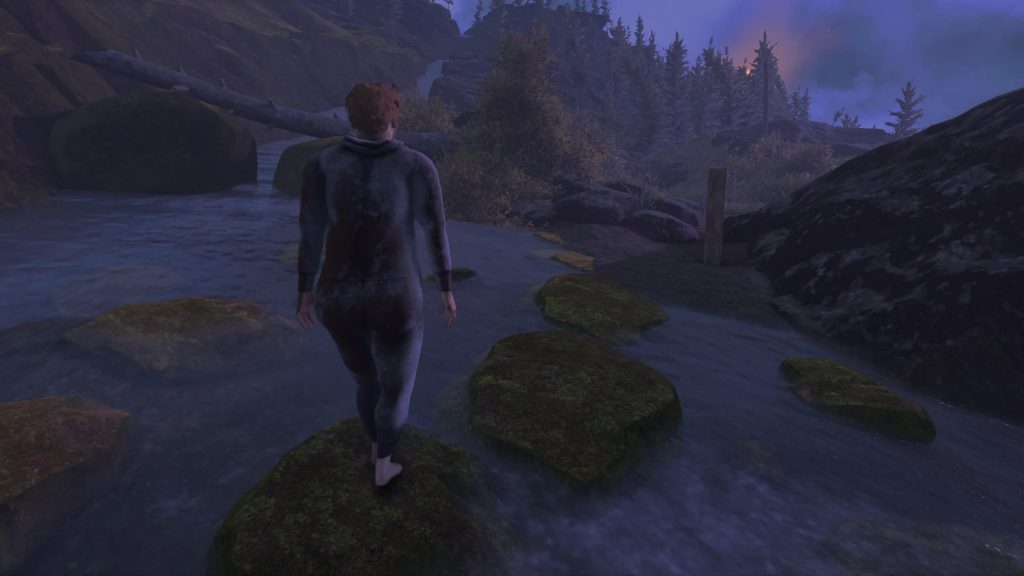 Gradients and surfaces shift to complicate matters and each of the game’s areas do try to ease you in. I did worry the game would escalate in a way that made completion impossible. Thankfully, the design of the open world allows for a few approaches. I think my frustration initially peaked at the castle area. It’s built out of sand and that loose surface would always move underfoot. You will learn to recognise what dangers lie ahead. Early on, it’s mud and waterfalls that become a genuine peril.
Gradients and surfaces shift to complicate matters and each of the game’s areas do try to ease you in. I did worry the game would escalate in a way that made completion impossible. Thankfully, the design of the open world allows for a few approaches. I think my frustration initially peaked at the castle area. It’s built out of sand and that loose surface would always move underfoot. You will learn to recognise what dangers lie ahead. Early on, it’s mud and waterfalls that become a genuine peril.
Progress is saved constantly so, should you fall, that’s where you’ll pick back up. There’s so checkpoints beyond the end of each chapter and that could be off-putting. As someone who has felt the pain of going back to square one, the frustration has spilled over into agony more than once. I’d still pick myself up for another go. The world does give off the impression there are other routes and, even through failure, I felt the obstacles in my path were surmountable.
Most of my failures are down to me misunderstanding the route or poor execution but one late-stage agony really heightened how detrimental the physics can be. As Nate falls, he goes limp. He’s got no arm control or sense of self-preservation so it’s up the terrain to stop him. If you decide to return to a saved game, you might spawn in already in the process of falling over. I made sure to have my feet planted before quitting out but that’s no guarantee.
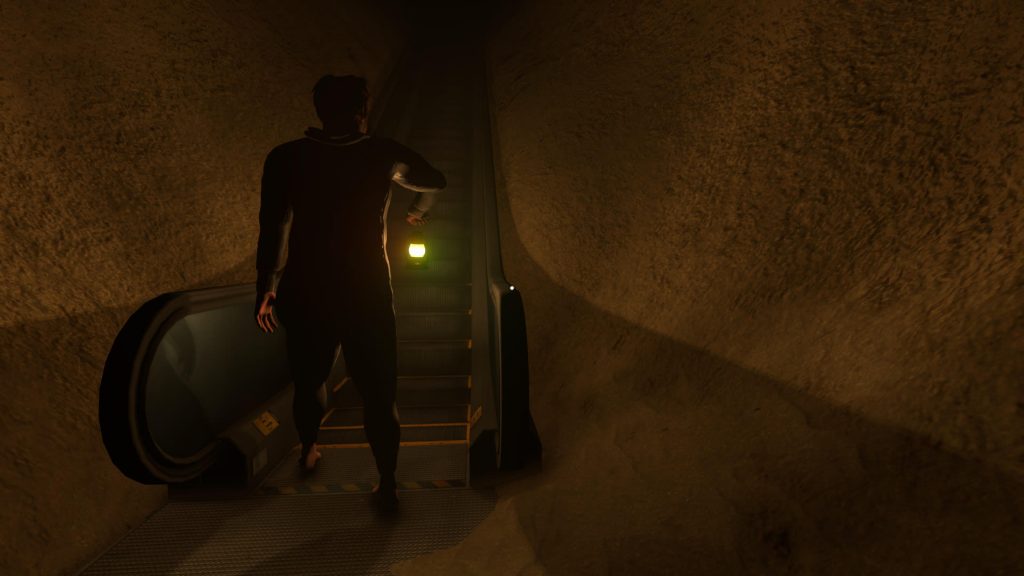 The lack of a map can make deciphering possible ascents very difficult. I found myself losing track of trails and ultimately doubling back on myself. The world is not static, either. As a means to keep players from getting stuck, the world loops on itself. I saw this first hand after a disastrous drop put me near some unbelievably convenient staircase. Moments like that can pull you from the brink of despair but the mystery surrounding Baby Steps has led to me questioning what obstacles are compulsory and what is optional.
The lack of a map can make deciphering possible ascents very difficult. I found myself losing track of trails and ultimately doubling back on myself. The world is not static, either. As a means to keep players from getting stuck, the world loops on itself. I saw this first hand after a disastrous drop put me near some unbelievably convenient staircase. Moments like that can pull you from the brink of despair but the mystery surrounding Baby Steps has led to me questioning what obstacles are compulsory and what is optional.
Presentation is an odd one. The flora and fauna repeat and the landscape isn’t quite going for realism. It can look downright ugly and Nate is especially gaunt. The details go towards thing like Nate’s onesie. Sweat builds up in the places you’d expect and he gathers mud and debris as he falls. Landing in water gives him a fresh slate. The bedroom scenes that introduce new chapters are immaculate so it’s clear there is polish in some areas.
The other characters have an exaggerated look to them that does give them plenty of life. You can also retrace your literal footprints, particularly in snowy areas. What this game can show is scale. From ground level, your next objective can seem miles away and peaks do offer a grand vista. Under nightfall, things are perhaps too dark. Cutscenes are oddly given their own quick time event in order to skip them. That’s a decent gag but can really irk me when I need to get going.
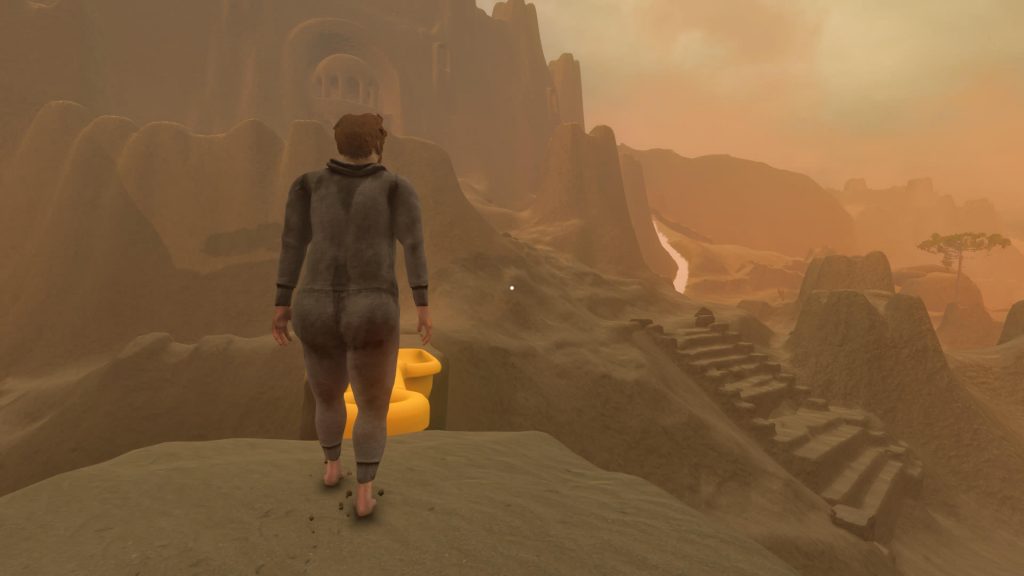 The music is bizarre. It’s diegetic but, as you spend more time in an environment, it builds to a beat of birdsong, growls and drumming. When banging my head against an obstacle, I feel the need to turn it down. Nate’s anguished quips are varied but they will repeat often. The voice acting is mostly fine with the performances from Foddy and Cuzzillo being tonally spot on. The sound of squelching underfoot, coupled with the haptic feedback, did help me understand when I was on solid ground and little touches like the earth slipping away gave me pause for thought.
The music is bizarre. It’s diegetic but, as you spend more time in an environment, it builds to a beat of birdsong, growls and drumming. When banging my head against an obstacle, I feel the need to turn it down. Nate’s anguished quips are varied but they will repeat often. The voice acting is mostly fine with the performances from Foddy and Cuzzillo being tonally spot on. The sound of squelching underfoot, coupled with the haptic feedback, did help me understand when I was on solid ground and little touches like the earth slipping away gave me pause for thought.
I think there’s always going to a qualifier when recommending Baby Steps. It is doing some surprisingly smart things for a literal walking simulator. It’s certainly more accessible than something like QWOP and the open-world does offer some opportunities for routes of varying challenge. That said, I did reach my limit with the last chapter throwing a genuine horror towards me. Without a map, it’s difficult to assume what might be compulsory and that will trip some players up. I enjoyed most of what I’d seen, but I’m also ready to put it to bed.
+ The open world offers a few routes that vary in challenge.
+ I find the improvised humour really lands.
+ The story has a surprising amount of heart to it.
- The lack of a map makes it hard to distinguish the path of least resistance.
- Will lead to times of genuine frustration.
- Nate's ragdoll physic can play havoc in confined spaces.
